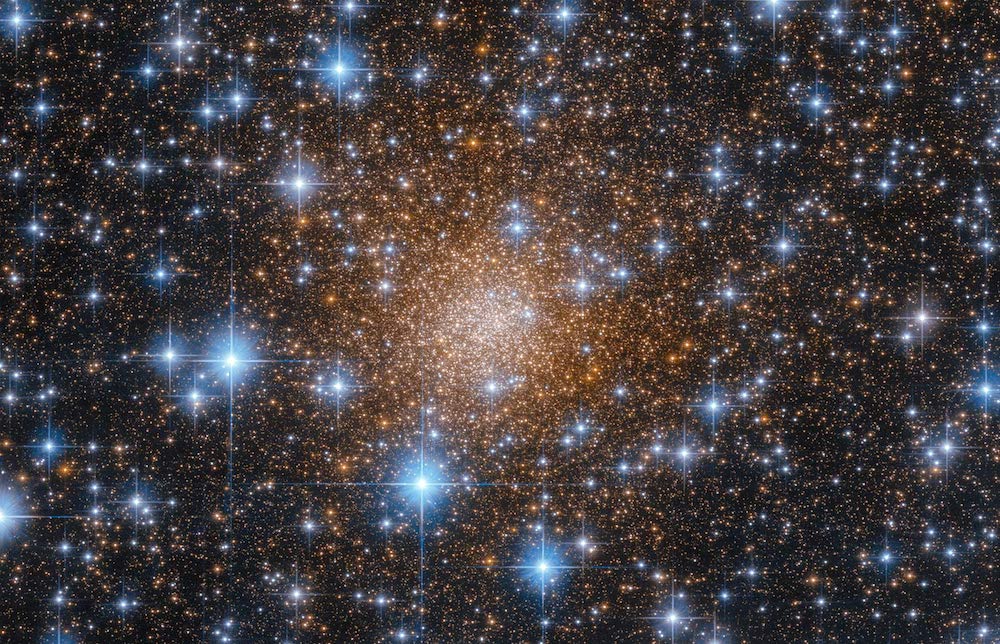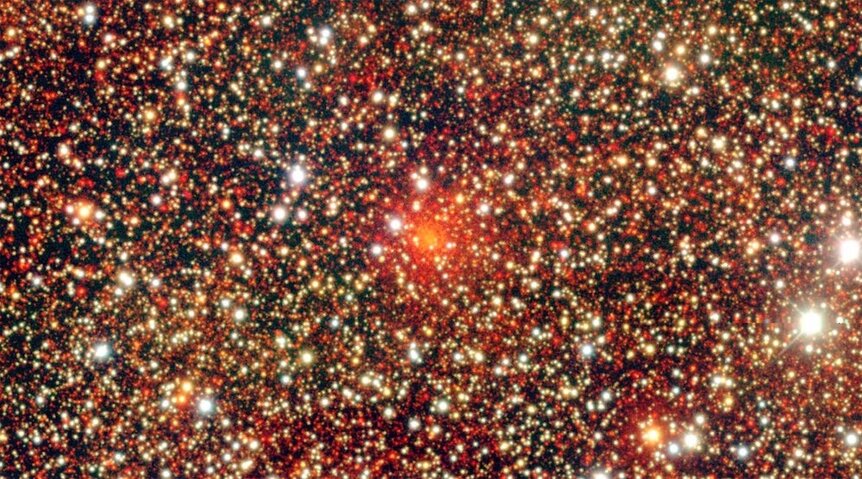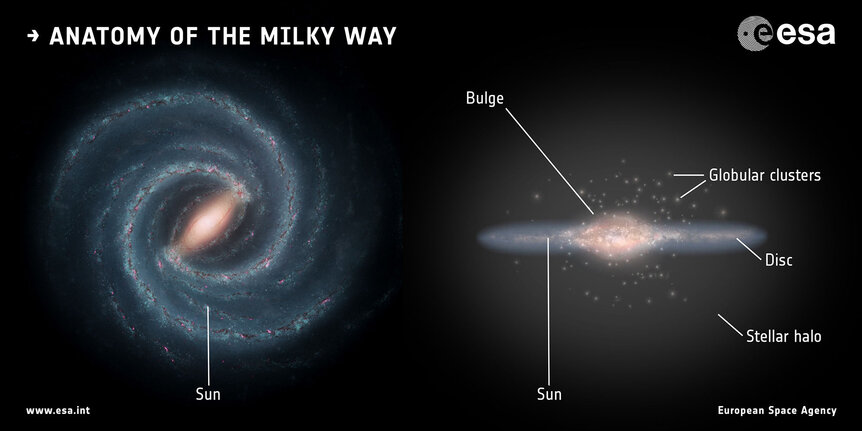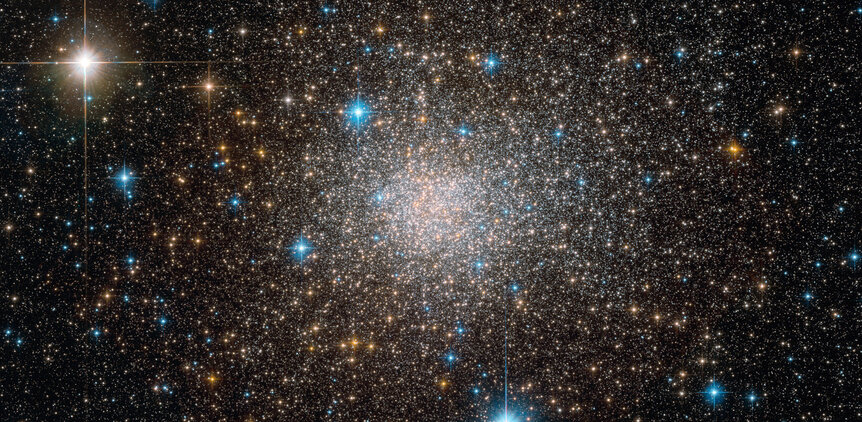Create a free profile to get unlimited access to exclusive videos, sweepstakes, and more!
The secret of the bulge: A gorgeous partially digested galaxy in the Milky Way’s core
The star cluster Liller 1 is not what it appears.

There are times I just want to post a pretty astronomical image, something that delights the eyes and gives a sense of wonder about the sky.
The problem with this — or “problem,” I should say — is that there’s no such thing as just a pretty picture. In every case, they wind up leading to some interesting cosmic insight.
But this time it’s more. This particular pretty picture may hold the key to how one of the critical components of our Milky Way galaxy formed.
So first, the eye candy:
Wow! That is Liller 1, a cluster of stars. It’s generically called a globular cluster — these are roughly spherical collections of hundreds of thousands of stars that orbit around their center of gravity. The Milky Way has about 160 such clusters, though some galaxies have many, many more. Regular readers know I love globulars, and have written about them a lot. They’re beautiful, and many of them are easily spotted in small telescopes, so they’re a favorite of mine for many reasons.
Right away I knew Liller 1 was weird. It’s so red! And the stars around it are so blue, so something must be up. In situations like this the first thing I do is check the filters used to see if the colors might be a bit skewed, messing up how we see things. In this Hubble image (and you should click that; the full-size image of Liller 1 there is jaw-dropping) it turns out the colors are indeed skewed, but, ironically, it doesn’t matter.
In this image what you see as blue is actually red light. And what you see as red is actually near-infrared light, just outside what our eyes can detect. So no, this isn’t displayed natural color — more or less what you’d see by eye — but in fact this does show that the cluster is very, very red. Why?
In this case it’s location. Liller 1 is about 26,000 light-years away from us and very close to the galactic center, probably only a couple of thousand light-years from it. The Milky Way’s core is loaded with clouds of dust — made of tiny grains of rocky and sooty material — which scatter away blue light. Only red light can get through to us, so any object there will look much redder than it really is. In this case, the Milky Way stars that we see as blue in the image are actually red stars, but the Liller 1 stars are exceptionally red due to the dust.
Still, this gave me pause. Globulars orbit the galactic center, and most are seen far from it in the sky. A few are relatively close to the center as they plunge through the galaxy on their orbits, but having one this close to the exact center struck me as odd.
And it is odd! That’s because Liller 1 is almost certainly not a globular cluster. It’s the remains of what was once a much larger object that the Milky Way ate.
The Milky Way is a spiral galaxy, with a flat disk of stars, gas, and dust. In the center is what we call the bulge, generally a flattened spheroid of older, redder stars, though in different galaxies it has different shapes. Ours is lozenge-shaped, like a Tic Tac. How the bulge formed isn’t clear, but one hypothesis is it came together as large structures fell to the galactic center and were stripped of their stars. Some of these structures may have been enormous clumps of stars and gas in the Milky Way’s disk, and others could have been dwarf galaxies onto themselves, with a few billion stars in them.
Could Liller 1 be one of those dwarf galaxies? The evidence points strongly to it! Globulars tend to be very old, with a single population of ancient stars in them, usually over 12 billion years old. Some, though, have a second or even third population of stars that are younger, maybe 10 billion years. But looking at Liller 1’s stars, astronomers found it has an old population of 12-billion-year-old stars and a second that’s only 1- 2 billion years old! That’s a huge discrepancy, and shows that somehow it was able to make stars far more recently than globulars do.
But how? Globulars are well known not to have any gas in them — they don’t have enough gravity to hold onto it as massive stars explode and blow the gas out — so they can’t make stars. Liller 1, though, was somehow able to hold on to its gas for eons. It’s likely more massive than your typical globular, with as much as 2.5 million times the mass of the Sun. But in the past it may have had a few billion solar masses of stars in it, again strongly implying it was once more like a small galaxy than a big cluster.
And it’s not alone. Terzan 5 is another globular-like cluster in the Milky Way core, and also has two distinct populations of stars in it; in fact the astronomers were suspicious of Liller 1 because they had previously examined Terzan 5 and came to the conclusion it too was what they call a bulge fossil fragment.
Both of these objects are difficult to see because of the dust obscuration, but imply there may be more of them in the core, partially hidden from view. If these truly are surviving structures from the birth of our galaxy and the construction of its bulge, they are critical pieces of the puzzle of how our Milky Way came to be the way it is. If we can find more, then solving that puzzle becomes more doable.
And it’s like I said: In astronomy, there’s no such thing as just a pretty picture. There is always a much, much bigger picture it’s a part of.






























